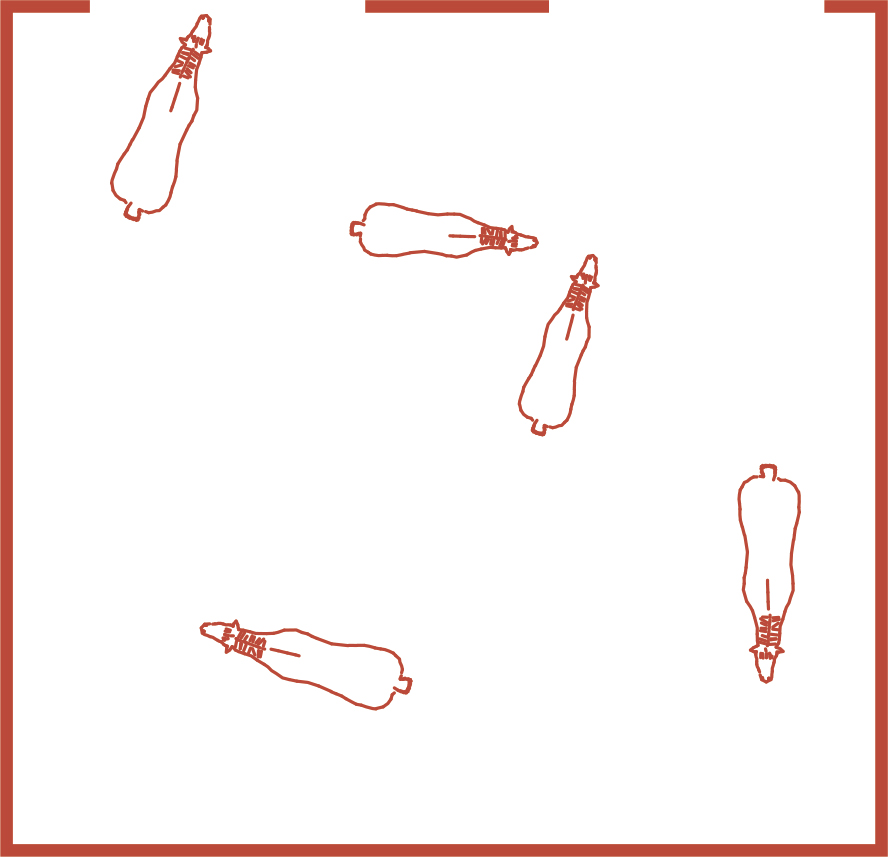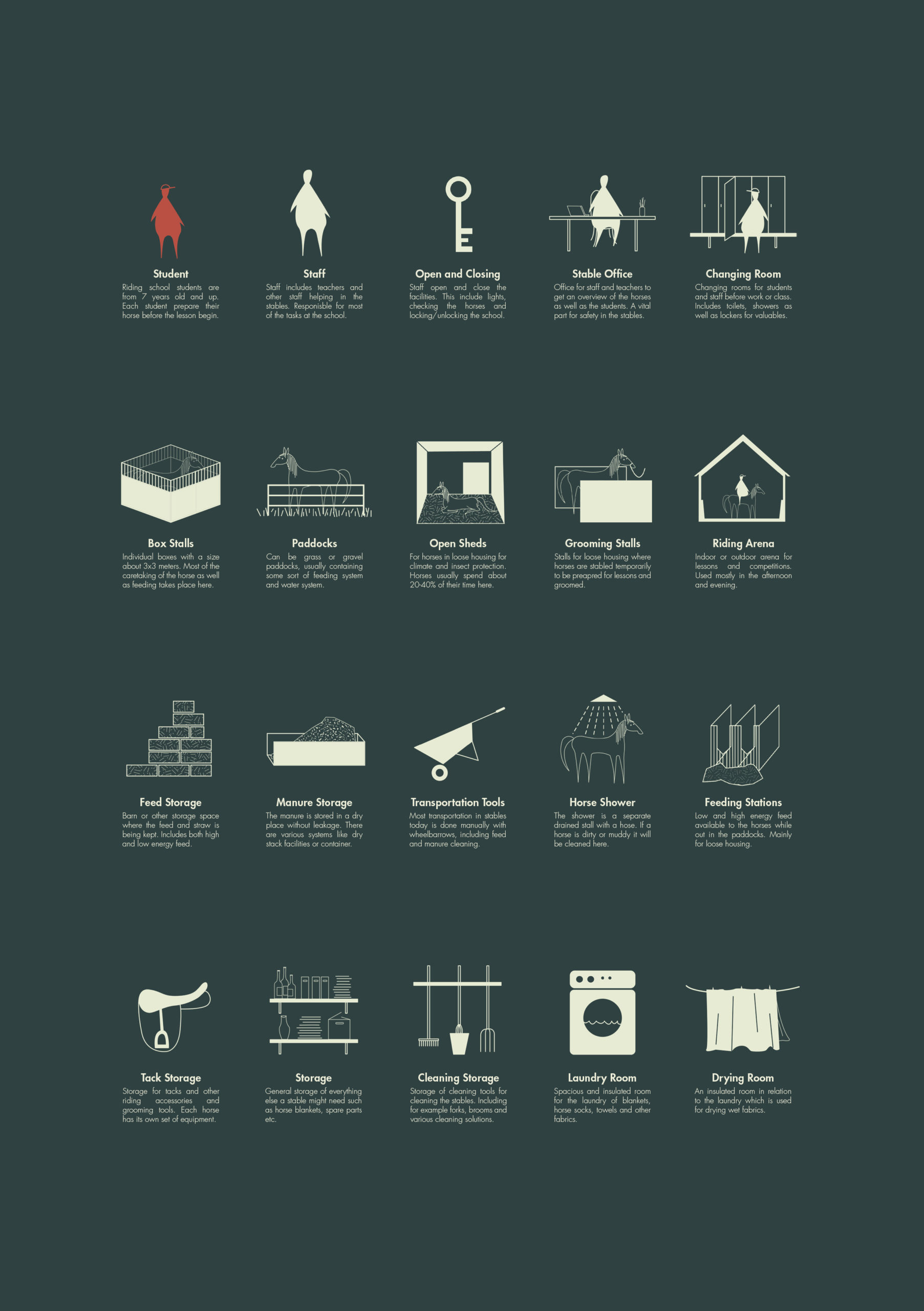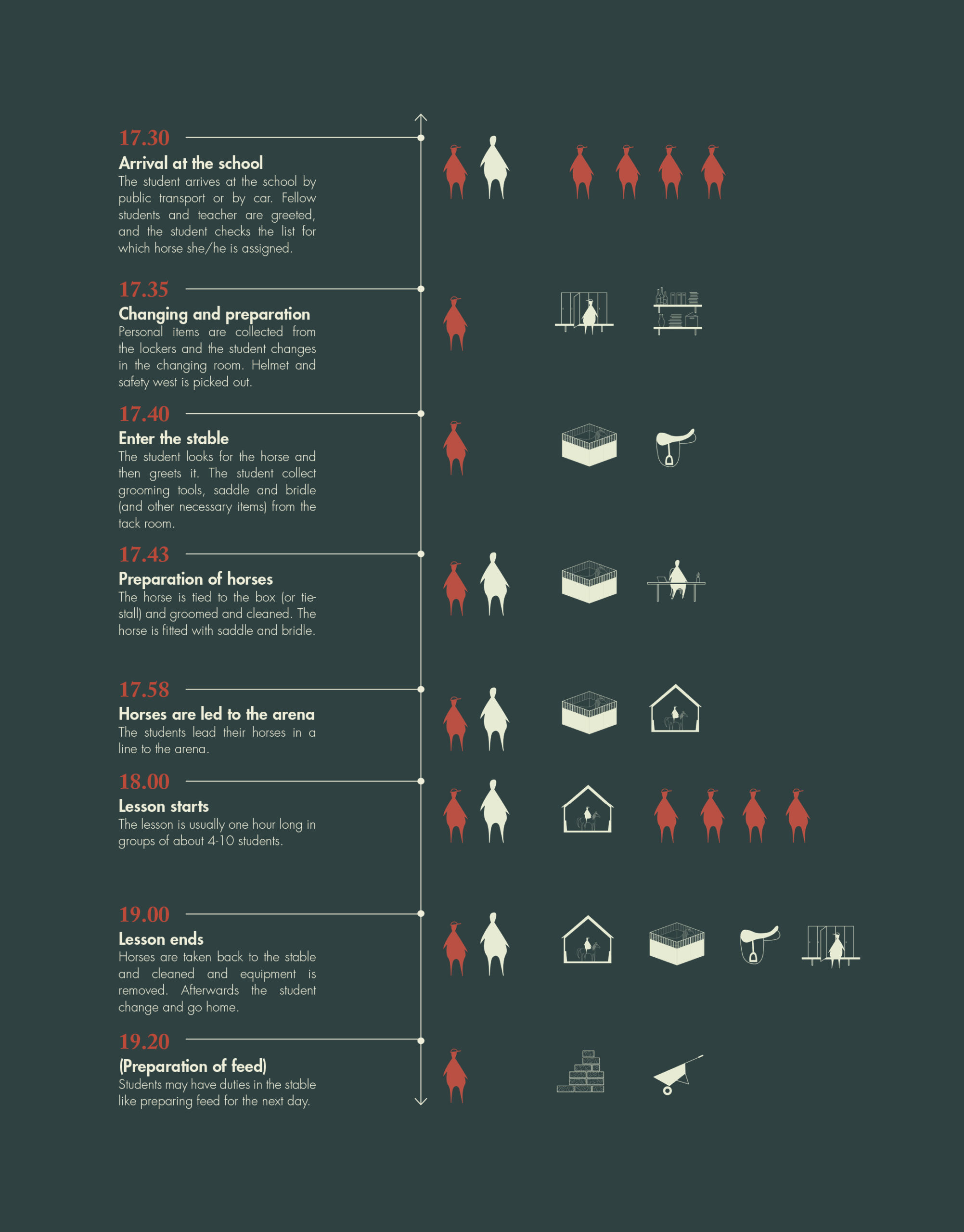theory.
criterias for horse welfare.
Good feeding
- Absence of prolonged hunger
- Absence of prolonged thirst
Good housing
- Comfort around resting
- Thermal comfort
- Ease of movement
Good health
- Absence of injuries
- Absence of disease
- Absence of discomfort caused by use
Appropriate behaviour
- Expression of social behaviour
- Expression of other behaviours
- Good human-animal relationship
- Positive emotional state
feed.
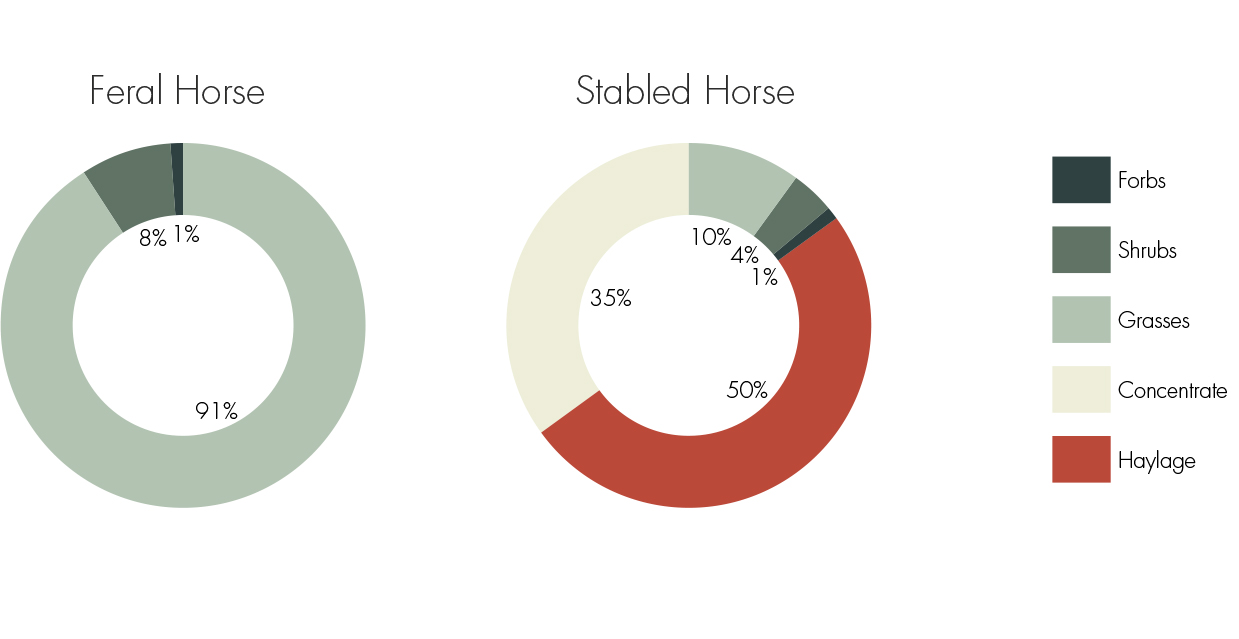
time budget.
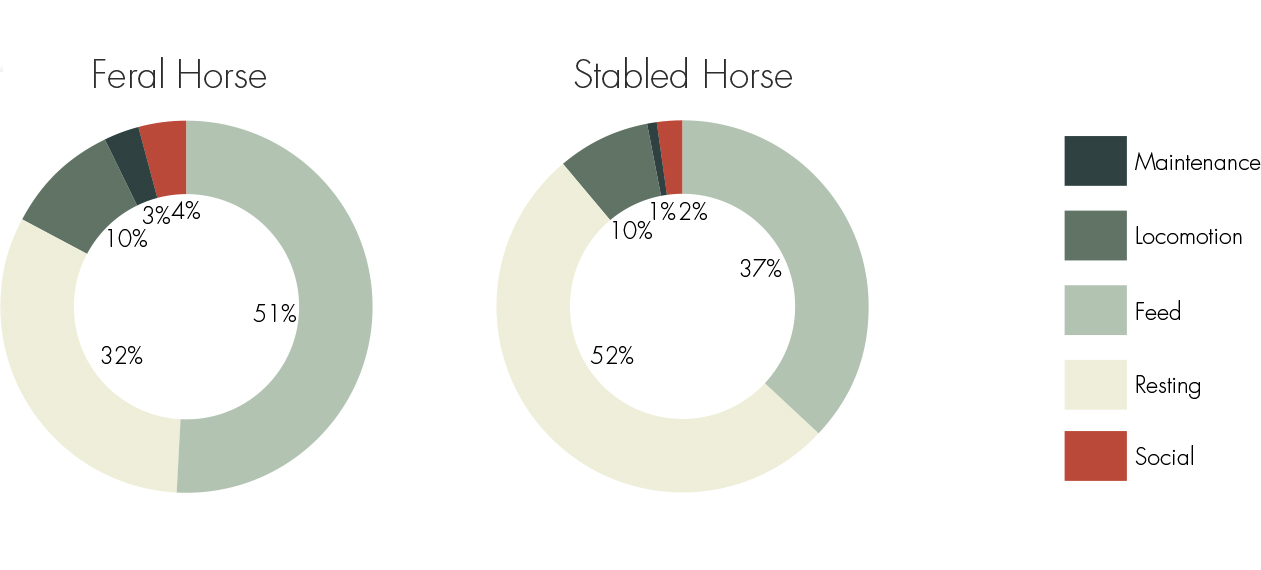
elements of a riding school.
daily routine.
a lesson.
stabling types.
There are mainly two types of housing; individual housing and group housing. The most common stabling types in Sweden today are individual housing types of the box-stall housing and the tie-stall housing, as well as the more recently popular group housing type, loose housing. This page presents some of the types and figurations of a stable.
The choice of housing in a stable is based on the practicality, the available space and the wellbeing of the horses.
tie-stall housing.
The tie stall is a housing type where the horses are tethered to the wall. The movement of the horse is heavily restricted. The tie stall was made illegal to build a few years ago which has made it less common. A good solution is a tie stall grooming stable in combination with loose housing.
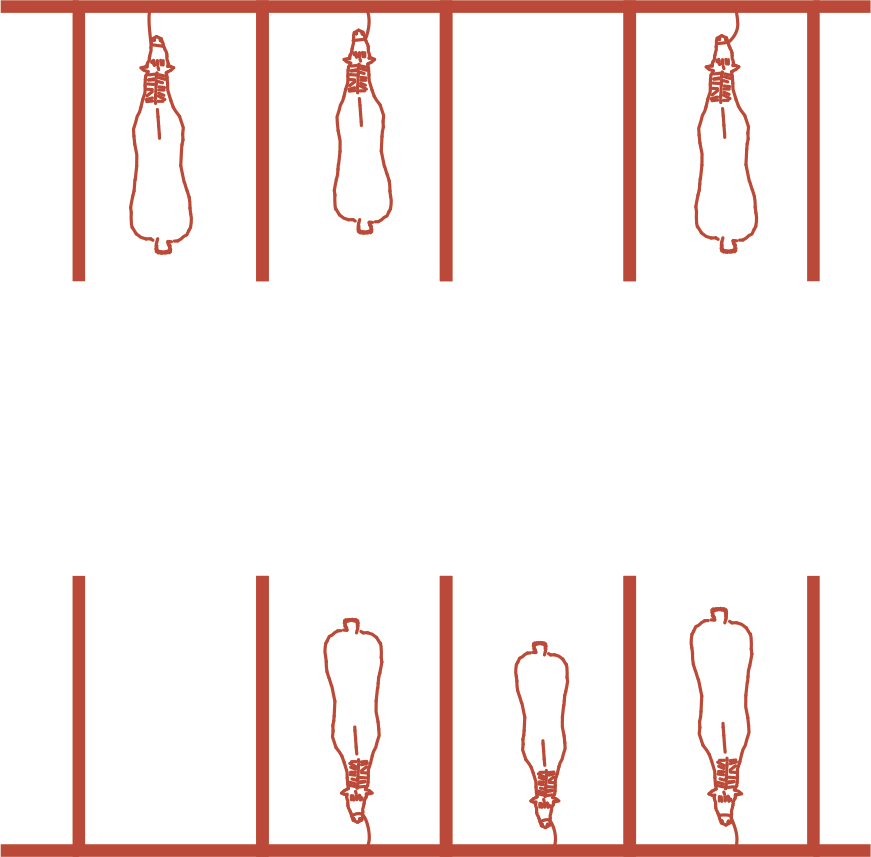
box housing.
A box stall is a small space, around 10 – 12 sqm, in which the horse can move around freely. Horses in this type can typically see and sniff other horses, but with minimal interactions. Box housing is the most common stabling type in Sweden, especially after the tie stall was made illegal.
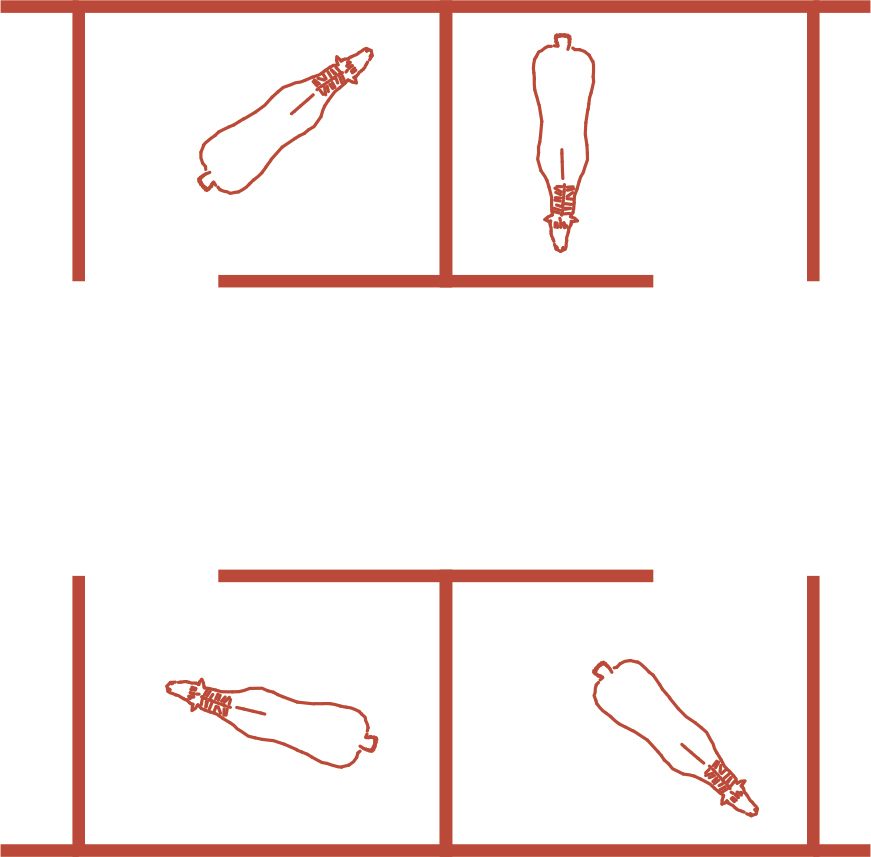
loose housing.
In loose housing the horses are kept together in a flock, with free access to paddocks, shelter, feed and water. Loose housing usually results in better psychological and physical health of the horses. It could however, pose a safety threat to the staff and problems regulating the amount horses feed.
